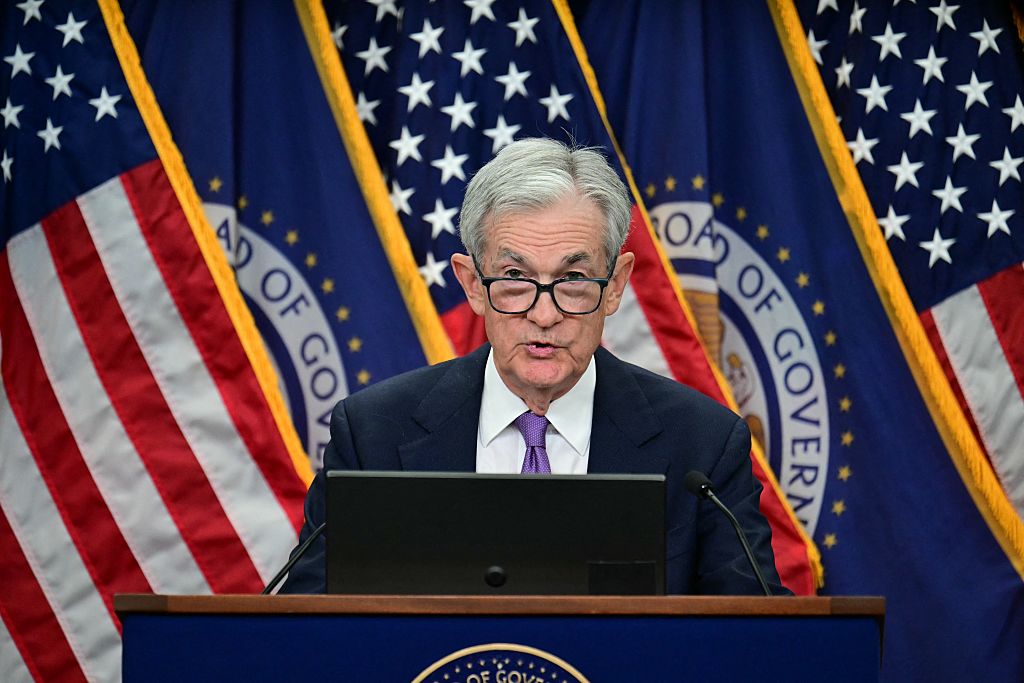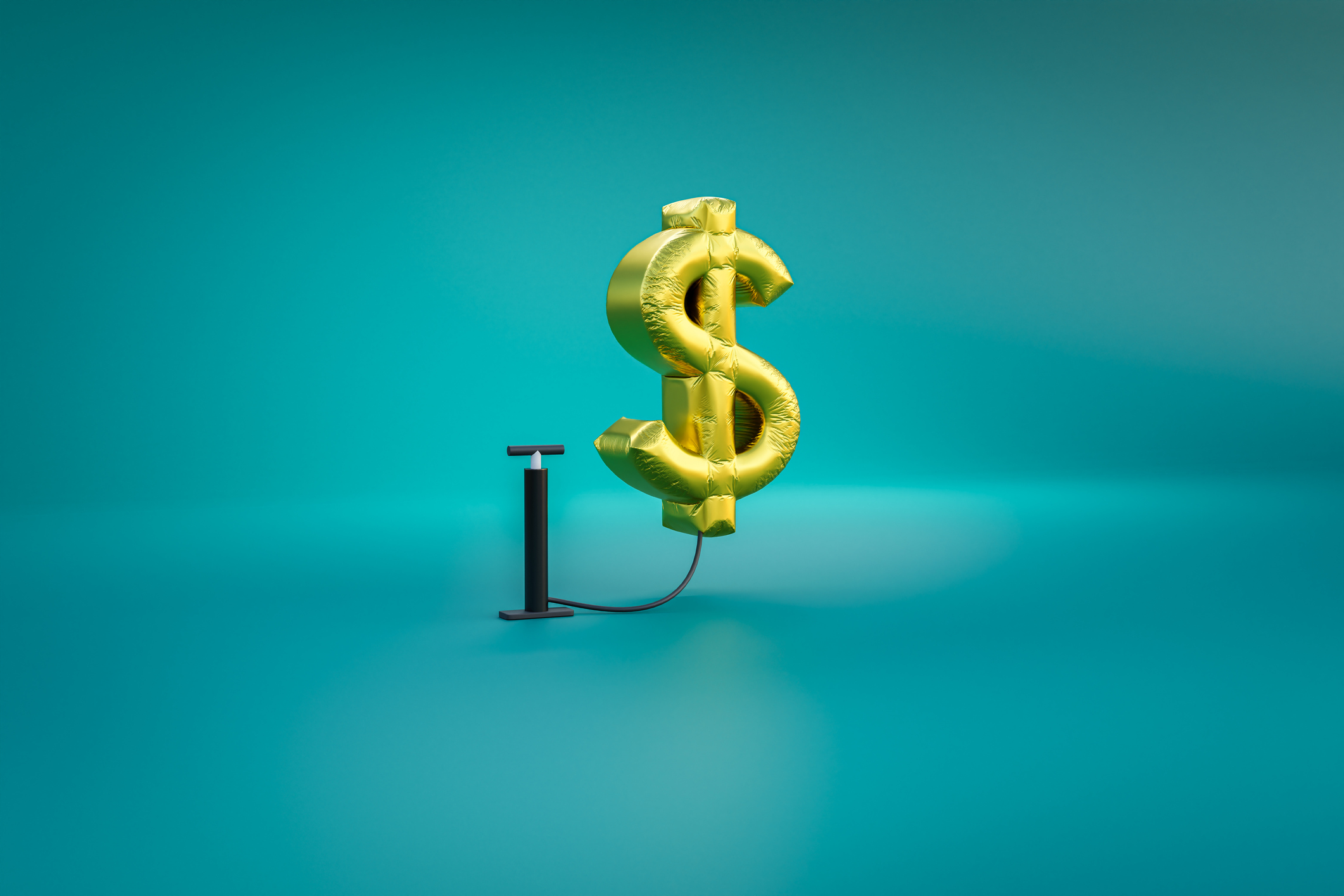Inflation Isn't Inevitable
As long as the Fed is responding to demand, an increase in the money supply is not inflationary.

The numbers are sobering. Over the past year, the level of bank reserves has soared more than tenfold, to $830 billion, and the total amount of credit the Fed has extended to the economy has doubled, to more than $1.6 trillion. Furthermore, the government is projecting that this year's fiscal deficit will top $1 trillion, the highest level relative to gross domestic product since World War II.
For anyone who has studied monetary theory, those numbers sound ominous. There's no doubt that inflation is caused by too much money chasing too few goods, and the Fed has certainly created a ton of money.
But look more closely and you'll find that the situation isn't as dire as it seems. Monetary theory teaches that inflation is caused not only by an increase in the supply of money, but also by an increase in the supply of money that overwhelms demand. The financial crisis, however, has led to unprecedented demand on the part of banks to pump up their reserves. As long as the Fed is responding to demand, an increase in the money supply is not inflationary.
From just $107.88 $24.99 for Kiplinger Personal Finance
Become a smarter, better informed investor. Subscribe from just $107.88 $24.99, plus get up to 4 Special Issues

Sign up for Kiplinger’s Free Newsletters
Profit and prosper with the best of expert advice on investing, taxes, retirement, personal finance and more - straight to your e-mail.
Profit and prosper with the best of expert advice - straight to your e-mail.
Plus, when we examine the changes in the amount of money in circulation, the numbers are much less daunting. The actual amount of currency outstanding -- those Federal Reserve notes that we all carry in our wallets -- has increased by only 7% over the past year. And M2, a measure of the money supply that includes bank deposits as well as money-market mutual funds, has increased by 11%. Much of that came after the Treasury and the Federal Deposit Insurance Corp. guaranteed assets in money-market funds last September and expanded deposit-insurance limits for banks. Bottom line: The Fed's massive infusion of money was a response to the tremendous increase in demand for liquidity by both banks and the public.
Warning signals. Although deflation is in the headlines today, the Fed has to be alert to inflationary pressures in the future. The value of the dollar, the price of gold and, most important, commodity prices have historically been early signals of inflationary pressures. Commodity prices -- particularly oil prices -- are depressed now due to the worldwide recession. But traders expect the price of oil to top $60 a barrel by the end of 2010. So once confidence returns, the Fed must act to withdraw excess liquidity and raise interest rates.
Those large projected federal deficits are manageable for now. As the economy recovers, they should be reduced by increasing tax revenues and the winding down of support programs, such as unemployment insurance. The federal government's debt-to-GDP ratio is now about 70%, not much different than the postÐWorld War II average.
Japan offers a good example of how much debt a developed country can handle without succumbing to inflation. Over the past ten years, Japan has doubled its debt-to-GDP ratio, to 180%, more than twice the average of other developed countries. Nevertheless, by reining in its money supply, Japan has not only avoided inflation but has actually experienced deflation. And the Japanese yen has been the world's strongest currency over the past decade.
Stable prices. All this doesn't mean that reckless government spending can't cause inflation. With Zimbabwe's President Robert Mugabe printing money to pay his supporters, there's no doubt that such spending is the cause of his country's spectacular hyperinflation.
Nevertheless, although President Obama's stimulus package greatly increases the near-term deficit, the data indicate that developed countries with responsible monetary authorities can accommodate liquidity shocks and absorb debt without yielding to inflation. Current policies won't spark inflation as long as policymakers keep their sights firmly fixed on their stated long-term goal of price stability.
Profit and prosper with the best of Kiplinger's advice on investing, taxes, retirement, personal finance and much more. Delivered daily. Enter your email in the box and click Sign Me Up.

-
 The Retirement Donor's Checklist: Key Deadlines by Gift Type
The Retirement Donor's Checklist: Key Deadlines by Gift TypeRetirees have some charitable contribution options that can help avoid spikes in income from RMDS and capital gains.
-
 Cooler Inflation Supports a Relief Rally: Stock Market Today
Cooler Inflation Supports a Relief Rally: Stock Market TodayInvestors, traders and speculators welcome much-better-than-hoped-for core CPI data on top of optimism-renewing AI earnings.
-
 Are T-Mobile's Prepaid Perks a Home Run or a Strikeout?
Are T-Mobile's Prepaid Perks a Home Run or a Strikeout?T-Mobile's prepaid lineup promises MLB.TV, T-Mobile Tuesdays and hotspot data. But do the perks make it worth switching?
-
 The November CPI Report Is Out. Here's What It Means for Rising Prices
The November CPI Report Is Out. Here's What It Means for Rising PricesThe November CPI report came in lighter than expected, but the delayed data give an incomplete picture of inflation, say economists.
-
 The Delayed November Jobs Report Is Out. Here's What It Means for the Fed and Rate Cuts
The Delayed November Jobs Report Is Out. Here's What It Means for the Fed and Rate CutsThe November jobs report came in higher than expected, although it still shows plenty of signs of weakness in the labor market.
-
 December Fed Meeting: Updates and Commentary
December Fed Meeting: Updates and CommentaryThe December Fed meeting is one of the last key economic events of 2025, with Wall Street closely watching what Chair Powell & Co. will do about interest rates.
-
 The Delayed September Jobs Report Is Out. Here's What It Means for the Fed
The Delayed September Jobs Report Is Out. Here's What It Means for the FedThe September jobs report came in much higher than expected, lowering expectations for a December rate cut.
-
 October Fed Meeting: Updates and Commentary
October Fed Meeting: Updates and CommentaryThe October Fed meeting is a key economic event, with Wall Street turned into what Fed Chair Powell & Co. did about interest rates.
-
 The Delayed September CPI Report is Out. Here's What it Signals for the Fed.
The Delayed September CPI Report is Out. Here's What it Signals for the Fed.The September CPI report showed that inflation remains tame – and all but confirms another rate cut from the Fed.
-
 What the Rich Know About Investing That You Don't
What the Rich Know About Investing That You Don'tPeople like Warren Buffett become people like Warren Buffett by following basic rules and being disciplined. Here's how to accumulate real wealth.
-
 Banks Are Sounding the Alarm About Stablecoins
Banks Are Sounding the Alarm About StablecoinsThe Kiplinger Letter The banking industry says stablecoins could have a negative impact on lending.